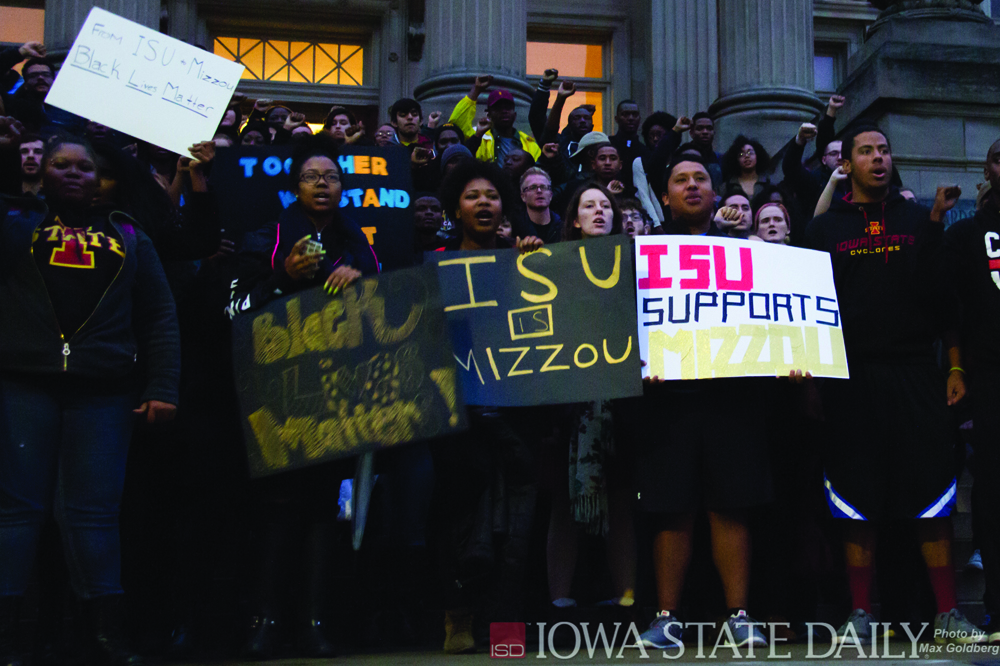Colleges and universities have long been considered hotbeds of social activism, to the exultation of some and the frustration of others. Social movements often find support amidst college students — fledgling civic members who are spending hours upon hours learning to understand America’s history and politics. So it comes as no surprise that in 2015, grassroots responses to institutional racism and the wave of recent changes in our understanding of sexuality gained momentum on college campuses. For readers and viewers of the major American media outlets, all eyes were on these campuses — Missouri, Yale, Claremont McKenna, Wheaton, Liberty, just to name a few — as movements and events on campuses repeatedly made headline news. Waltonian news editor Ryan Klein and staff writer Anthony Barr recap the biggest college news stories of 2015 and how to make sense of them moving forward.
The university has, historically, been a place where free inquiry and free speech allow students and faculty to wrestle with the past, seek to understand the present, and prepare for the future. In 2015, a series of student protests led to discussions of race and identity and stirred up a debate about the state of free speech on college campuses.
For example, after a fairly innocuous email sent by Claremont McKenna College’s dean of students Mary Spellman to a Latina student, students protested and initiated a hunger strike that led to Spellman’s (forced) resignation. The offense? Spellman’s statement that she would work to serve those students who “don’t fit our CMC mold.” In The Forum, CMC’s student paper, writer Christina Yoh clarifies that the email was the straw that broke the camel’s back: the discussion on race had started eight months prior when CMCers of Color (an on-campus student organization) approached administration with their concerns.
Near Halloween, Yale’s Intercultural Affairs Committee sent an email to students asking them to be sensitive and not wear offensive Halloween costumes. Erika Christakis, a lecturer and associate master of Yale’s Silliman College, wrote a response that gracefully argued for free speech and communal value-shaping as opposed to top-down directives. Students responded by surrounding her husband, Nicholas, to demand (with swearing and other inappropriate behavior) that he apologize for his wife’s email, which he would not do.
And who could forget the chaos at the University of Missouri when football players forced the President to resign by refusing to play any more games until he stepped down. This bold move was precipitated by a number of racially-charged incidents that the student body felt was not properly addressed.
Some have have looked on these demonstrations with concern over what is all too often social-justice-warfare driven less by rationality then by emotionalism. The Atlantic ran an article decrying “the coddling of the American mind” and the “movement” to “scrub campuses clean of words, ideas, and subjects that might cause discomfort or give offense.” Meanwhile The New Yorker asserted that there is not a crisis of free speech but rather that there is some “intense scrutiny from those just beyond the gates, eager to diagnose every gesture as some kind of larger trend.”
There is a long history of student protests on college campuses. Take, for example, the two-year student strike at the University of Paris in 1229 which was prompted after the death of several students who were being punished for rioting. In more recent history, consider the fight for free speech at the University of California, Berkeley in 1964-1965.
The conversations across college campuses in 2015 were part of the larger tapestry of contemporary public discourse on race in the United States. 2015 was the year of the Black Lives Matter movement; it was the year that Between the World and Me (which explores race by African-American author Ta-Nehisi Coates) won the National Book Award; it was the year that The Atlantic ran a cover-story on “The Black Family in the Age of Mass Incarceration”. If college students are perhaps not as good at participating in this conversation, they nevertheless shouldn’t be discouraged from trying to.
Regardless of whether 2015 was a year of crisis or not as pertains to campus activism, it also saw some fantastic insights on living in a pluralistic culture. Law Professor John Inazu writes of a confident pluralism: “Confidence reinforces the convictions we hold. Pluralism recognizes and reinforces the differences that exist.”
NYT columnist David Brooks writes: “The pluralist is committed to a philosophy or faith, but also to an ethnicity and also to a city, and also to a job and also to diverse interests and fascinating foreign cultures. These different commitments balance and moderate one another. A life in diverse worlds with diverse people weaves together into one humane, multifaceted existence. The rigidity of one belief system is forced to confront the messiness of work relationships or a neighborhood association.”
College campuses provide a beautiful transition space for young people to live in community with people who are vastly different than themselves. Our plurality can be divisive but it can also be enriching. For 2016, rather than getting sucked into the drama of identity-politics, perhaps it might behoove us to listen to wiser voices like Inazu and Brooks as we seek to navigate the microcosm that is college and the macrocosm that is our shared world.

